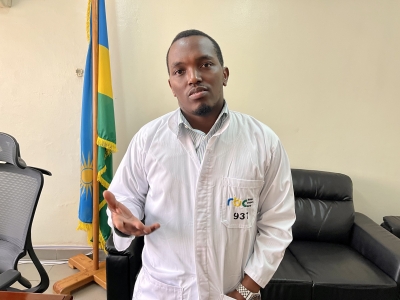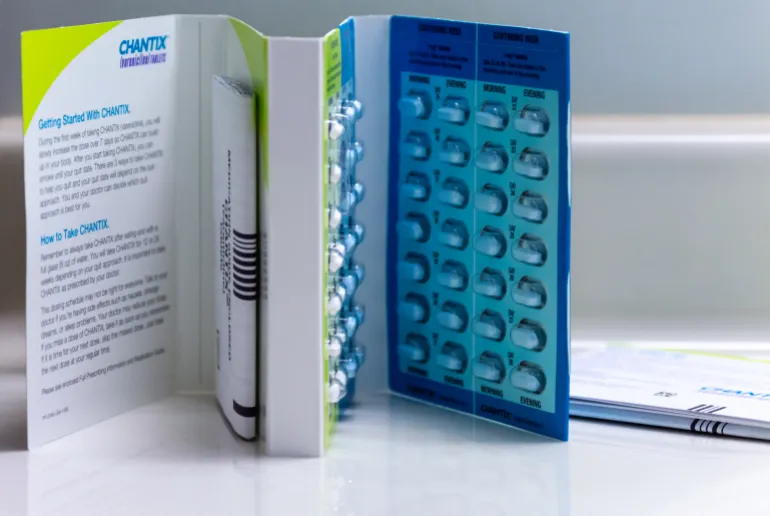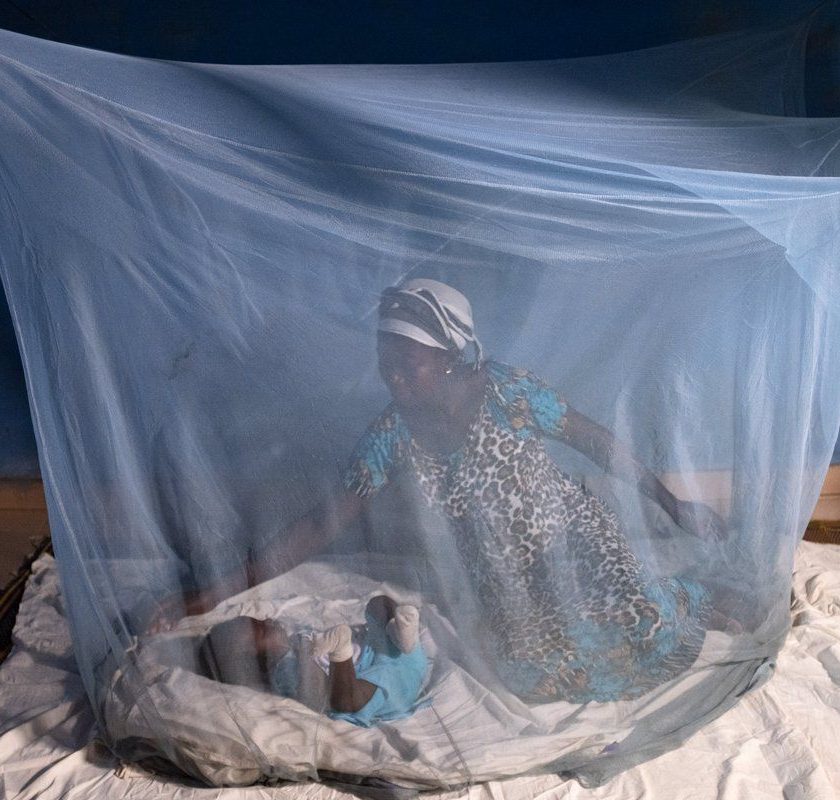Rwanda is set to export plasma as the country seeks to address the cost it incurs on the production and disposal of excess amounts of this blood component, as well as get derived medicinal products for the patients in need of them at a relatively lower price, it has emerged.
The sale of plasma is provided for in a Ministerial Order of July 11, 2024, on modalities for the use of the human body, organs, tissues, cells and products of the human body, which was published in the Official Gazette, on July 12.
According to the ministerial order, products of the human body that may be sold are plasma extracted from the blood. It provides that the price of plasma is at least $50 per litre.
It defines plasma as a light-yellow liquid part of blood that remains after red blood cells, white blood cells, platelets and other cellular components are removed from blood.
According to Cleveland Clinic, a major health facility in the US, plasma is necessary to help your body recover from injury, distribute nutrients, remove waste and prevent infection, while moving throughout your circulatory system.
Of the total produced plasma in Rwanda, only about five per cent goes to health facilities and that is considered the current demand.
It is used to cater for patients who suffer from dehydration (body water/fluid loss) including people affected by burn, and those suffering from major diseases such as cancers and malaria, as well as heavy bleeding that reduce the level of blood, according to information from Rwanda Biomedical Centre (RBC).
The medical products derived from plasma include gamma globulin which is medication taken by mothers with a blood rhesus (Rh) incompatible with that of babies they have given birth to – when the mothers have Rh-negative blood while the babies have Rh-positive blood, information from RBC shows.
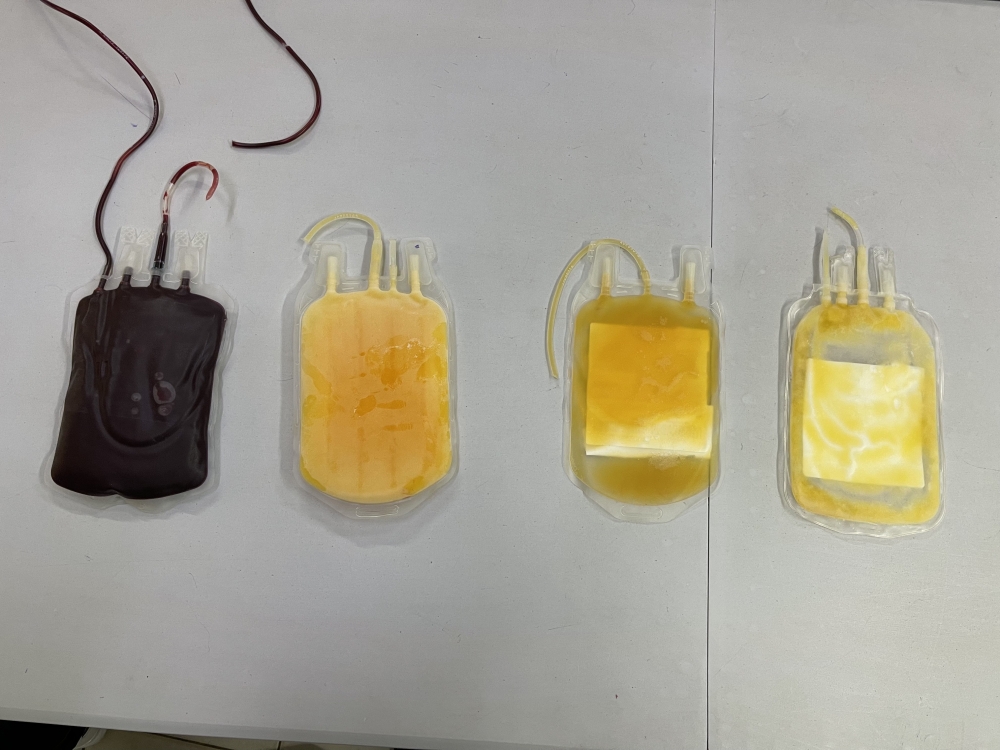
In an interview with media, Dr Thomas Muyombo, Blood Transfusion Division Manager at RBC, talked about Rwanda’s move to export plasma, and why it matters.
Here are excerpts:
Why does Rwanda want to export plasma, and what does it mean to the country?
In Rwanda, about 5 per cent of the plasma produced is used.
For each litre of blood, there is about half a litre of plasma. That means if we collect about 85,000 bags of blood per year, we have almost 40,000 litres of plasma annually.
If you consider about 5 per cent of the 40,000 litres per year, you find that about 2,000 litres are used. This means that 38,000 litres of plasma are wasted. Yet, money was spent on them in terms of testing, storage, production and buying equipment for their collection, among others, which is a loss.
Plasma is the component [of the blood] that is not mostly used compared to other components [due to the types of medical conditions diagnosed at health facilities].
The mostly used component is red blood cells, followed by platelets, plasma as the third, and then cryoprecipitate [the part of plasma that contains a number of clotting proteins (factors) that help control bleeding].
Discarding or destroying them [through incineration so that it does not cause issues to the environment or people such as through environmental pollution] implies a cost.
That is why an idea came about to ensure that the unused blood [plasma] that was put to waste and was causing a loss be utilised through the availability of plasma derived medicinal products. And, those products are manufactured by few factories worldwide because they are expensive to build.
How was the price of $5 arrived at?
A market survey was done by considering different factories that make blood-derived medicines and they looked at how much plasma is sold at. Then, after getting the price, they made an estimation. It is a price that was set based on a market survey.
When is plasma set to start being sold, and what are preparations like?
When the ministerial order was published, we had not talked to any factory so that we know the requirements for exporting plasma.
Second, we did not know what we were lacking as a centre so that we meet requirements in terms of quality level. And, our staff had not gotten [relevant] training. Now, those factors have been catered for.
We have so far talked to two factories – one in Africa, and another in Asia [they are in countries I do not want to reveal because this might spoil negotiations] – and they expressed interest in purchasing plasma from Rwanda and intend to make medication from it. And they find it fine that if we choose to get medicines in exchange for the plasma, they can give them to us instead of paying money for it.
There is also what they told us to fulfill, including expanding storage. Normally, we used to store the plasma that we need to use [about five per cent of the total production], and destroy or discard that we will not use [about 95 per cent] before it costs us a lot.
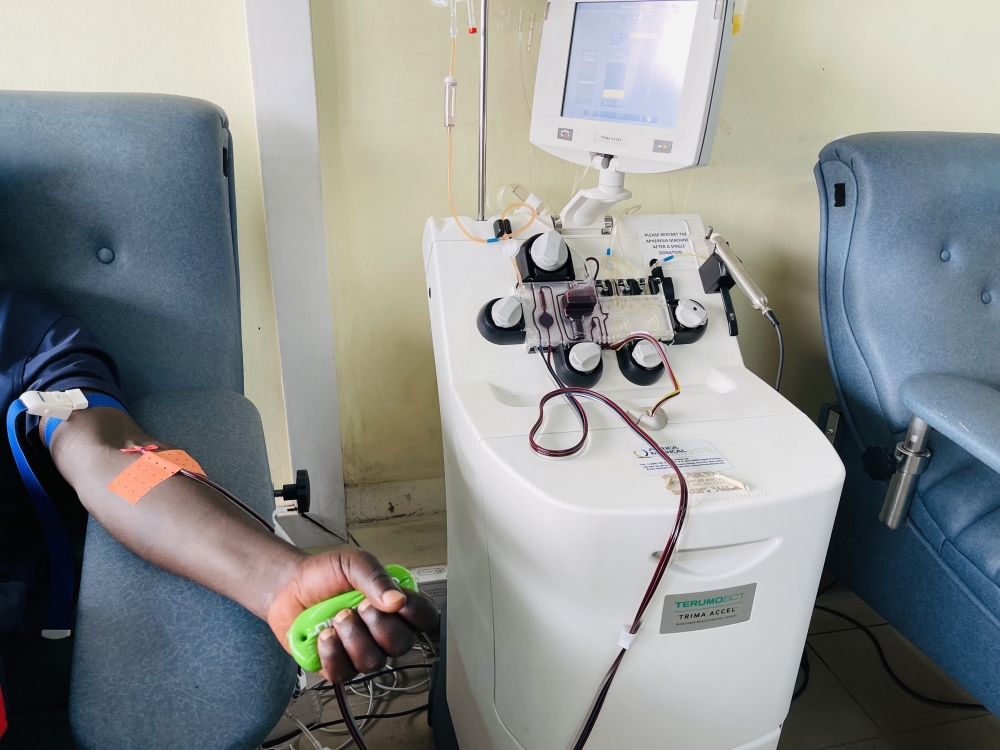
Now, we have expanded storage such that 95 per cent of plasma can be stored before being exported to a plant. We are the storage [equipment] and we are in the process to install it in an appropriate place. It is a suitable storage that can keep plasma cold [plasma is kept in a cold environment of minus 18 oC] for safety over a long period.
We are in a process to talk with an entity that will provide us with a nucleic acid testing (NAT) platform which is key among tests needed before one gets allowed to export plasma.
We expect to have the NAT in the country within the next two or three months because we are at the level of agreement on the contract so that we sign it with them. It is that NAT that was lacking. Once it is available, we will start storing plasma and exporting it.
Our wish is that in this financial year by July 2025 we should have a contract, have gotten a person (firm) who will be fractionating plasma, and have exported the first plasma to a [contracted] plant.
Do you hope that by exporting plasma, Rwandans could access derived medicinal products at a relatively lower cost?
Actually, that’s what I think is the main goal behind this ministerial order. I believe that at the end of the day, our patients are going to access these medicinal products that were in other words very rare and hard to find and hard to access because of their expensive cost, and I believe that once the process has reached a stage of negotiation between the fractionator and the government the parties will consider that in their minds to ensure that at least this plasma that is exported is imported again as a finished product that can be issued in a form of medicines to our patients.
Such medicines are not easily accessible because they are very expensive, yet you realise that people who need them will use them almost during the rest of their life.
There are, for instance, diseases that a person is born with and are incurable such as those that can make him/her bleed to death, and as a result, you realise that such a person will always need medicine injections, yet you find that one bottle of such medicine costs about Rwf400,000 and can be used for about a month.
The ministerial order will make us able to get the drugs derived from plasma we will provide to those factories at a lower cost.
Someone may wonder why we are not building a plant to produce the plasma derived medicinal products. Actually, those plants are very expensive and they also require large volumes of plasma that we cannot produce in Rwanda [thus far].
For example, from several consultations that we made, we found that for such a plant to be established, there is a requirement of at least having a minimum of 500,000 litres of plasma [annually], which is very high compared to how much we produce in Rwanda in terms of quantities of unused plasma [Rwanda’s current annual unused plasma is estimated at 38,000 litres].
That’s why it’s very hard for us to even solicit or advocate for such a plant to be established here. But as our society evolves, as the neighbouring countries also catch up in terms of quality and interest leading towards export of plasma, maybe with our quantities adding to those of our neighbouring countries, we can look at that maybe in the future.
But as we speak, it’s advisable and it’s paramount that we look into the possibility of exporting.
On sustainability of supply of a given amount of plasma to a plant or entity expected to have agreement with Rwanda, how is the country set to ensure that?
We cannot make such an agreement of that kind because the ministerial order does not aim to make plasma a lucrative venture. It is not a product we have got to export as it is the case for tea or minerals.
If you multiply about 38,000 litres [as the current annual plasma produced in Rwanda but it is not used], with $50 [which is the minimum price for a litre], it would amount to $1.9 million (approx. Rwf2.5 billion), it is less than the annual budget spent on blood testing alone, which is about Rwf4 billion. The government incurs that cost so that blood is available [to patients] free of charge.
This data intends to make people understand that the centre for blood transfusion or the government is going to profit from the blood [plasma] meant for patients at health facilities.
This is not a product we can say the country is going to export to be rich.
An estimated Rwf30,000 is spent on each bag of plasma that is not used. This cost includes the purchase of a bag to store, its collection, and disposal.
If you multiply Rwf30,000 by 38,000 [litres], you find that Rwf1.4 billion that was spent on the unused plasma. If we can save such money, and get about Rwf1 billion more, it means that on the cost of producing the remaining blood component that is used such as red blood cells, we have [also] saved Rwf1 billion. In brief, it implies sustainability and cost recovery [for blood collection and management] in an indirect manner.
SOURCE:TNT


